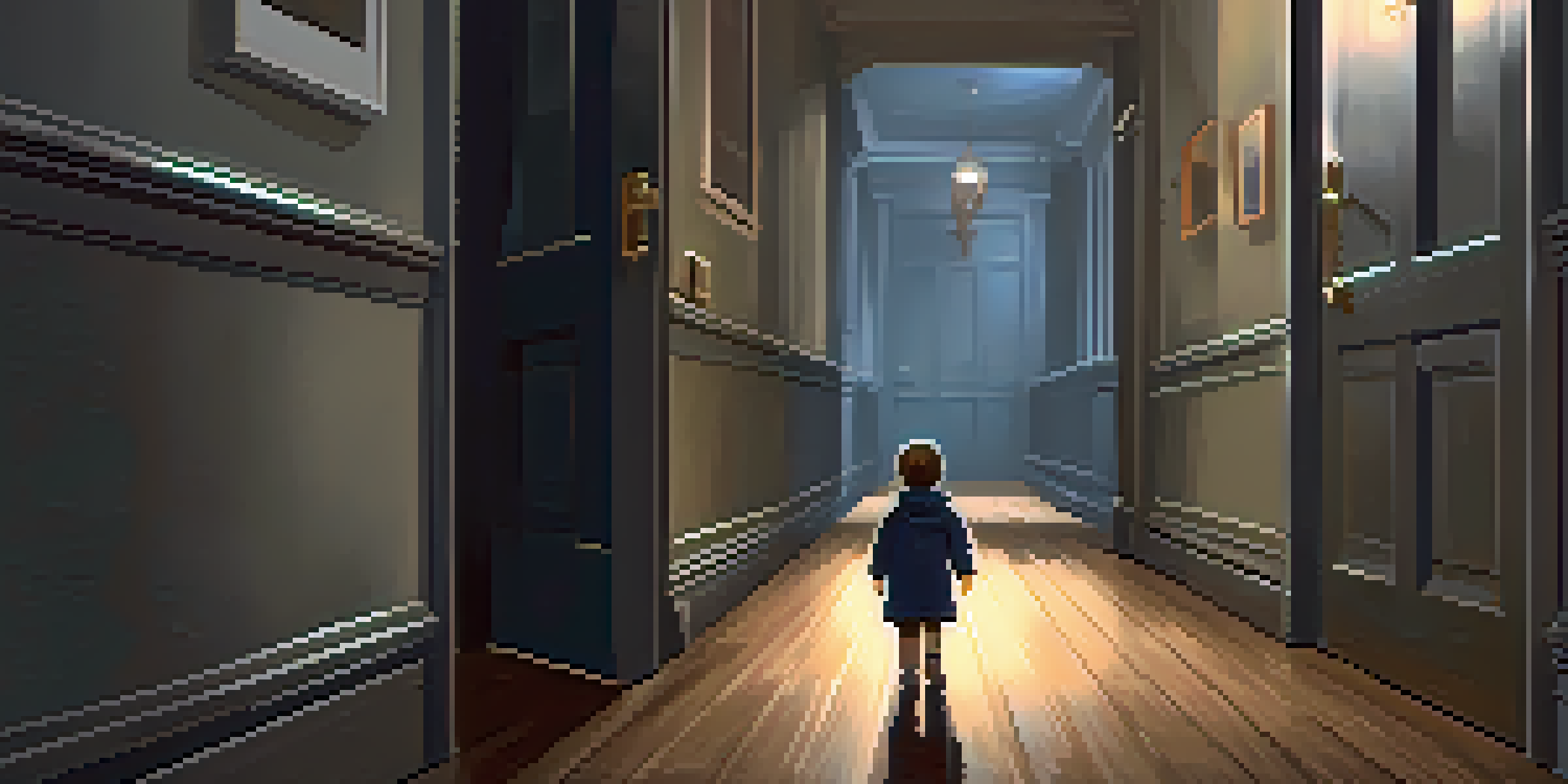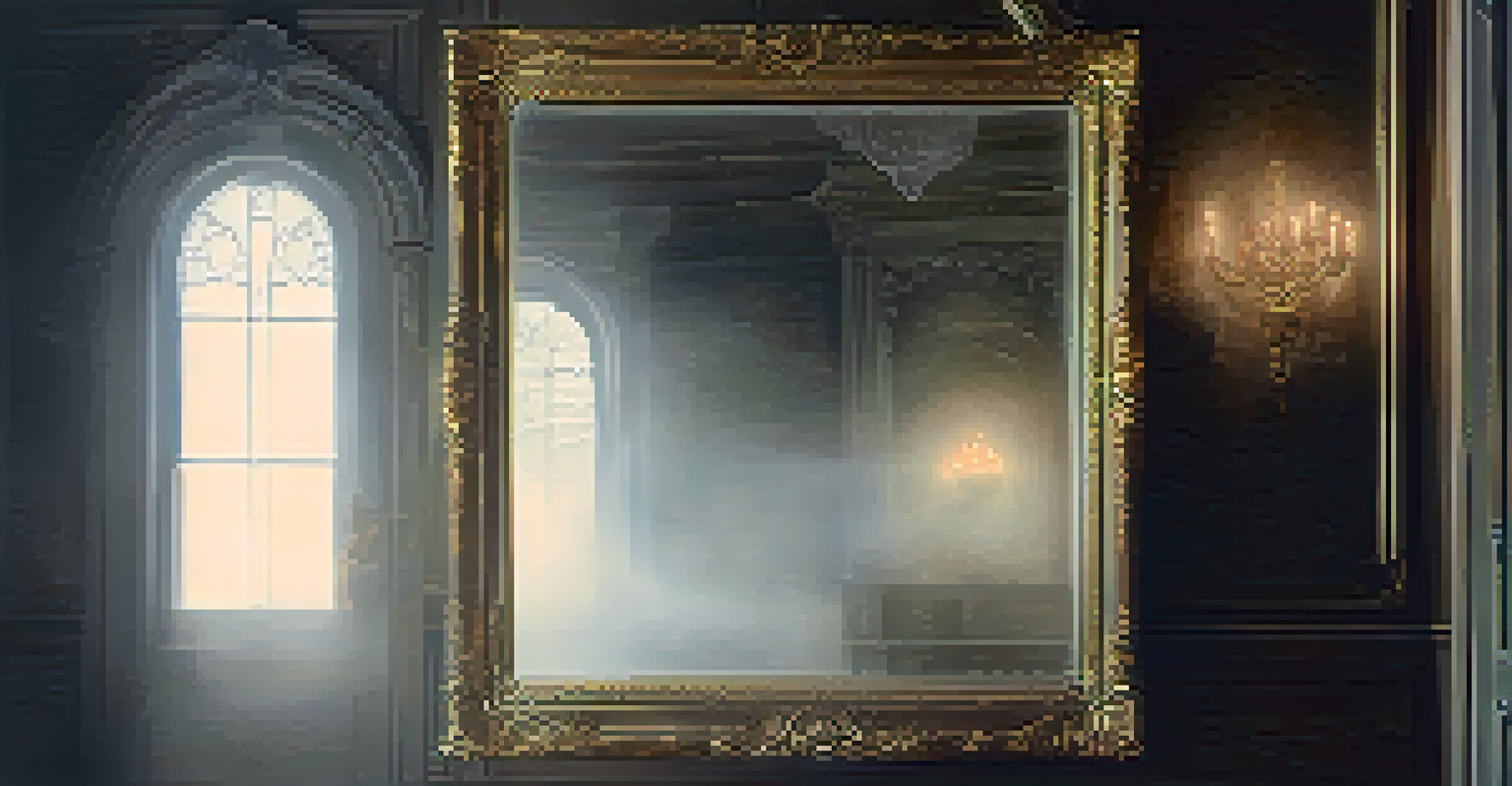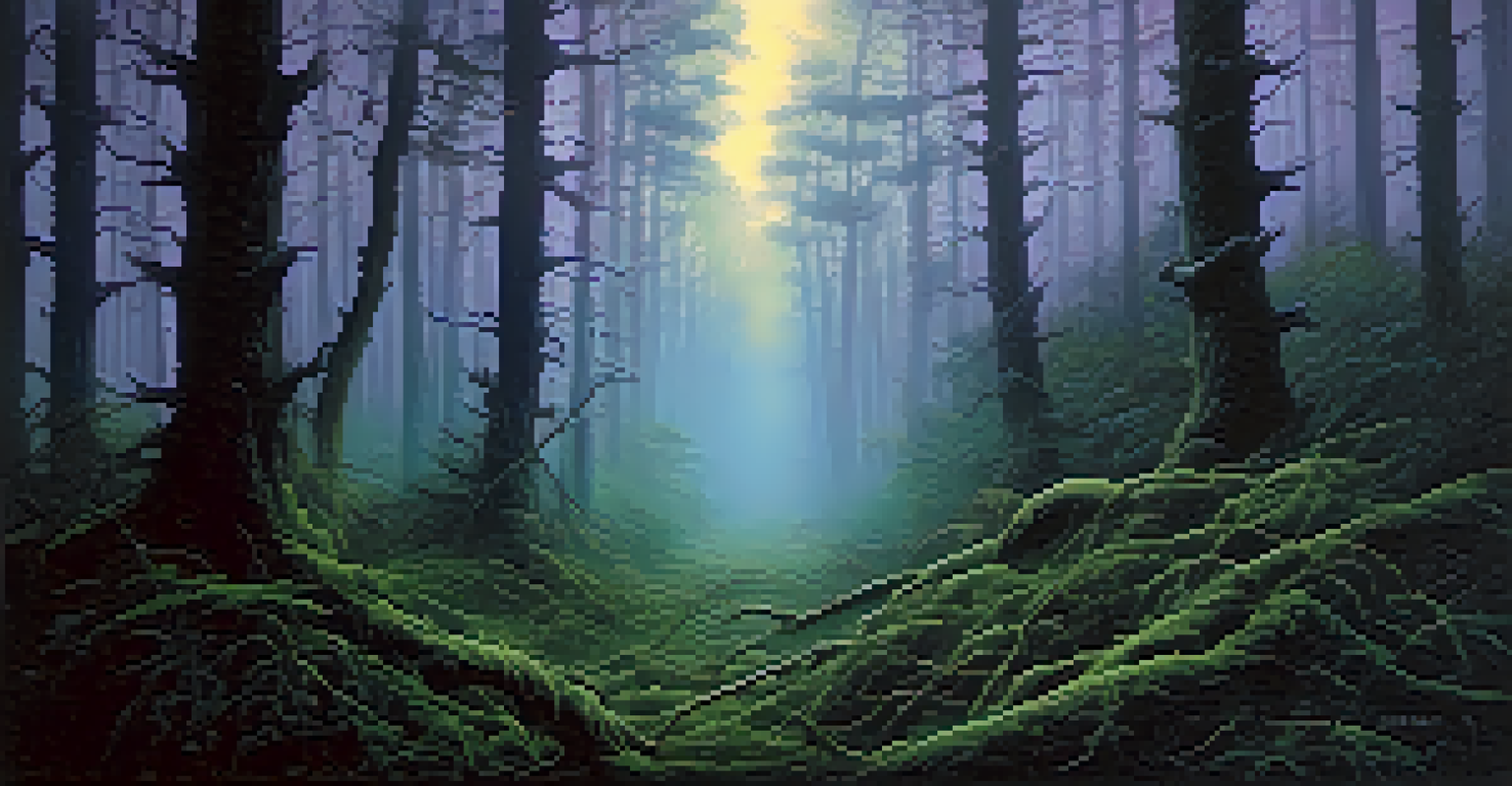Iconography of Fear: Analyzing Horror Film Symbols

The Role of Symbols in Horror Films
Symbols are vital in horror films, serving as shortcuts to emotions and fears. They can evoke dread, tension, and anxiety without a single word being spoken. For instance, a darkened hallway often signifies impending danger, tapping into our primal instincts about the unknown.
Horror films often use symbols that tap into our deepest fears and anxieties, transforming the ordinary into the macabre.
These symbols can also resonate on a deeper psychological level, reflecting societal fears or personal anxieties. A simple object, like a doll, can symbolize childhood innocence turned sinister, amplifying the horror experience. By using these visual cues, filmmakers enhance the narrative while engaging the audience's imagination.
Ultimately, the effective use of symbols allows viewers to connect with the story on multiple levels. This layered approach not only builds suspense but also encourages audiences to confront their own fears, making horror films both entertaining and thought-provoking.
Common Symbols and Their Meanings
From blood to darkness, horror films are rich with symbols that convey fear. Blood, for example, often represents violence and mortality, serving as a reminder of our vulnerability. Meanwhile, darkness may symbolize the unknown, inviting viewers to confront their fears of what lies beyond their sight.

Another common symbol is the presence of mirrors, which can represent self-reflection or duality. In horror, they often serve as portals to other realms or reveal hidden fears, making them a powerful visual tool. By tapping into these symbols, horror films create a visceral connection between the narrative and the audience's psyche.
Symbols Amplify Horror's Impact
Symbols in horror films evoke deep emotions and fears, engaging audiences and enhancing the narrative.
These symbols not only enhance the story but also create a shared language among viewers. Recognizing and interpreting these symbols can lead to a richer understanding of the film's themes and the fears it seeks to explore.
Cultural Context Influencing Symbolism
Horror film symbols are often influenced by cultural context, as different societies have unique fears and mythologies. For example, in Western cultures, the concept of the undead, such as zombies or vampires, often reflects anxieties about death and immortality. Conversely, Eastern horror films might utilize ghosts to represent unresolved familial or societal issues.
The horror genre, through its use of symbolism and imagery, allows us to confront our darkest fears in a safe environment.
These cultural lenses shape how audiences interpret symbols, making it essential for filmmakers to consider their target demographic. A symbol that resonates in one culture may fall flat in another, highlighting the importance of cultural relevance in horror narratives. This connection to culture adds layers of meaning that can enhance the horror experience.
Furthermore, as societies evolve, so do their fears, leading to a continuous transformation of horror symbols. This evolution ensures that horror remains relevant, allowing filmmakers to tap into contemporary anxieties while utilizing time-tested symbols.
The Evolution of Horror Icons
Throughout the history of cinema, certain horror icons have emerged, becoming symbols of fear in their own right. Characters like Dracula and Frankenstein's monster represent societal fears of the 'other' and the consequences of unchecked ambition. These figures have transcended their original narratives to become cultural touchstones.
As horror films evolve, so do the symbols associated with them. Today's horror may explore themes of technology and isolation, represented through characters like AI or digital specters. This shift reflects the changing fears of society and showcases how horror adapts to remain relevant.
Cultural Context Shapes Fear
Different cultures influence the interpretation of horror symbols, making cultural relevance essential in storytelling.
Ultimately, the evolution of horror icons illustrates the genre's ability to mirror societal fears. As we confront new challenges, these symbols will continue to evolve, ensuring that horror remains a potent vehicle for exploring the darker aspects of the human experience.
Psychological Symbolism in Horror
Many horror films delve into psychological symbolism, using images and motifs to explore the human mind. For example, claustrophobic spaces often symbolize mental entrapment, mirroring the characters' internal struggles. This connection between space and psyche creates a chilling atmosphere that resonates with viewers.
Additionally, characters may embody specific fears, such as loss of control or abandonment. These psychological elements allow audiences to empathize with the characters, making the horror feel more personal. When viewers see their fears reflected in the narrative, it amplifies the emotional impact of the story.
By intertwining psychological symbolism with traditional horror elements, filmmakers can create a more immersive experience. This approach not only terrifies but also invites reflection on the nature of fear itself, making horror a rich genre for exploring human emotions.
Iconography of Fear: A Case Study
To illustrate the power of horror film symbols, let’s analyze a classic example: 'The Shining.' The iconic image of the twins in the hallway serves as a chilling symbol of childhood innocence corrupted by evil. Their repetitive phrase, 'Come play with us,' evokes an unsettling blend of nostalgia and dread.
Another significant symbol in the film is the Overlook Hotel itself, which represents isolation and madness. As the story unfolds, the hotel's haunting presence becomes a character in its own right, embodying Jack's descent into insanity. This relationship between character and setting enhances the film's psychological horror.
Psychological Depth in Horror
Psychological symbolism in horror creates a chilling atmosphere that resonates with viewers' internal struggles.
By examining such symbols, we can see how they serve not only to scare but also to communicate deeper themes. 'The Shining' showcases how effective iconography can elevate a horror film from mere fright to a profound exploration of fear and the human condition.
The Impact of Symbolism on Horror Fans
The symbolism in horror films often leaves a lasting impression on audiences, becoming part of the cultural lexicon. Fans frequently discuss and analyze these symbols, creating a shared understanding and appreciation for the genre. This engagement transforms passive viewers into active participants in the horror narrative.
Moreover, symbols can evoke nostalgia, reminding fans of their first encounters with fear. The recurring motifs in horror can create a sense of familiarity, allowing audiences to connect with their own experiences. This shared language helps build a community among horror enthusiasts.

As horror continues to thrive, the impact of its symbolism will only grow. By recognizing and discussing these symbols, fans not only deepen their appreciation for the genre but also contribute to its ongoing evolution.